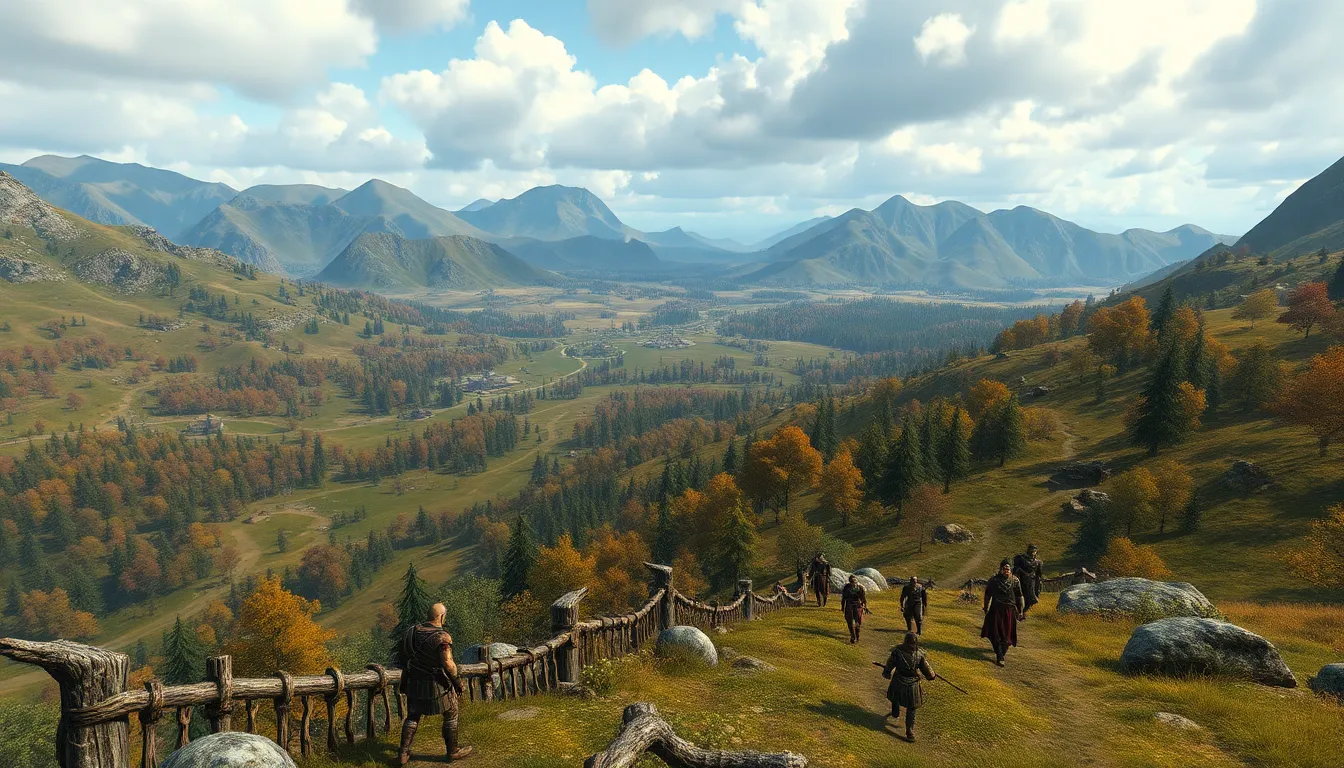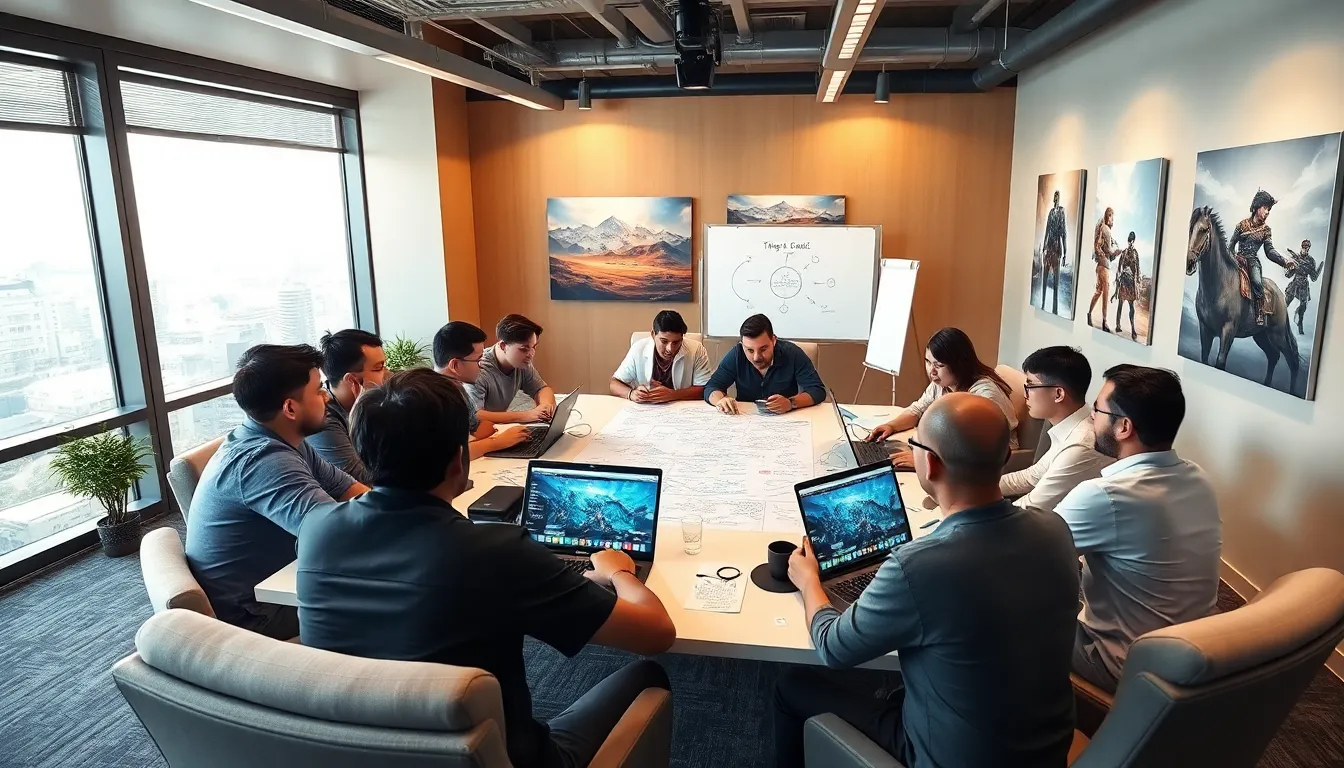In the vast universe of gaming, few things are as captivating as the intricate dance of AI pathing. Enter “Oblivion AI Pathing,” where the virtual world of Tamriel comes alive with characters that seem to have a mind of their own. Ever wondered how NPCs manage to navigate through the chaos of quests, dragons, and the occasional rogue player? It’s not magic; it’s a finely-tuned algorithm that keeps the experience immersive and entertaining.
Imagine your favorite NPCs as overly ambitious tourists, trying to find the best coffee shop while dodging dragons and awkward encounters. Oblivion AI pathing transforms these digital denizens into relatable characters, adding layers of depth to the game. Get ready to dive into the mechanics that make these virtual wanderers tick, and discover why they sometimes take the scenic route—because who doesn’t love a little detour in a fantasy realm?
Table of Contents
ToggleOverview of Oblivion AI Pathing
Oblivion AI pathing refers to the algorithms guiding non-playable characters (NPCs) through the expansive world of Tamriel. These systems ensure that NPCs navigate efficiently while creating immersive player experiences. Players often observe NPCs moving through towns and landscapes. NPCs might exhibit realistic behaviors such as seeking out locations for coffee or navigating obstacles, much like a tourist would.
The mechanics behind this AI pathing incorporate several elements. Pathfinding algorithms play a crucial role in determining the best route for NPCs. A common algorithm used is A*, known for its efficiency in finding the shortest path in a given environment. This algorithm evaluates potential paths based on various factors, including terrain height and nearby enemies.
Decision-making processes also shape NPC behavior. Each NPC is programmed with specific goals and motivations, influencing their movement. When an NPC approaches a region populated by players, it may alter its path to enhance the player’s interaction experience. NPCs avoid dangers and obstacles, reflecting a well-thought-out design that prioritizes engagement.
Additionally, the use of randomized behaviors ensures that NPC movement feels organic. Instead of following a predictable routine, characters will occasionally change direction or engage in unplanned interactions. These variations create a livelier atmosphere within the game.
All these elements work together to create a rich world where players feel immersed. Oblivion AI pathing highlights the advancements in gaming technology, showcasing how developers craft realistic and responsive characters that enhance gameplay.
Key Features of Oblivion AI Pathing

Oblivion AI Pathing incorporates several innovative features that enhance the gaming experience. These elements allow NPCs to navigate Tamriel’s vast landscapes realistically.
Dynamic Pathfinding
Dynamic pathfinding stands out as a core element of Oblivion AI pathing. This system adapts routes in real time based on environmental changes and player actions. NPCs can reroute to avoid obstacles, ensuring fluid movement throughout the game. If a character encounters an enemy, the pathfinding algorithm quickly recalculates to provide a safer alternative. Such adaptability enhances immersion, as players witness lifelike interactions within the game world. Moreover, dynamic pathfinding interacts with terrain data to better reflect real-life navigation strategies, leading to more believable NPC behavior.
Navigation Algorithm
The navigation algorithm forms the backbone of Oblivion AI pathing. Algorithms like A* enable NPCs to identify optimal routes while considering critical variables like distance and threat levels. Efficient calculations prevent characters from taking illogical paths or getting stuck on obstacles. Developers have finely tuned these algorithms to prioritize player engagement, which leads NPCs to anticipate player movements. Individual goals dictate how characters select their routes with randomization introduced to mimic human behavior. As a result, the navigation algorithm contributes significantly to creating a responsive and engaging gaming experience.
Advantages of Using Oblivion AI Pathing
Oblivion AI pathing offers significant advantages, enhancing both gameplay experience and NPC behavior.
Improved Gameplay Experience
Immersion stands out as a primary benefit of Oblivion AI pathing. Players encounter realistic NPC navigation that creates a dynamic atmosphere, making exploration more engaging. Lifelike interactions occur as NPCs maneuver through the game world, responding to environmental changes and player actions. Real-time path adjustments keep the gameplay lively, ensuring that no two encounters feel the same. Increased realism in NPC behavior fosters greater player connection to the game, elevating overall enjoyment. Engaging experiences result from well-implemented algorithms, guiding the NPCs while maintaining fluidity in movement.
Enhanced NPC Behavior
Naturalistic behavior characterizes NPCs thanks to Oblivion AI pathing. Their capacity to adapt to surroundings promotes a vibrant game world full of diverse interactions. NPCs navigate obstacles with agility, altering their paths to maintain a sense of realism. With personalized goals in mind, these characters act autonomously rather than robotic, enriching gameplay dynamics. Randomized actions contribute to unpredictable encounters, enhancing player engagement throughout the experience. Moreover, the carefully structured algorithms maintain efficiency while encouraging spontaneity, guiding NPCs in unexpected yet believable ways.
Challenges and Limitations
Oblivion AI pathing encounters several challenges that affect NPC navigation. One significant limitation arises from the complexity of the game environment. Map intricacies, like varied terrain and numerous obstacles, can complicate pathfinding. Dense forests or crowded towns often confuse NPCs, leading to less efficient movement.
Another challenge involves computational resources. Advanced algorithms, like A*, require substantial processing power. If systems cannot allocate sufficient resources, pathfinding efficiency decreases. Lower-end hardware may struggle with fluid NPC movement, resulting in noticeable performance issues.
These NPCs also face limitations regarding their interactions with players. While they exhibit lifelike behaviors, occasional glitches appear during their navigation. These glitches disrupt immersion. For instance, NPCs might collide with invisible walls or fail to respond appropriately to player actions.
Additionally, randomized behaviors, although excellent for creating unpredictability, can lead to inconsistent NPC actions. Players may experience unnaturally erratic behavior, which affects their sense of realism. Balancing randomness with plausible actions remains a constant challenge for developers.
Lastly, tailoring NPC goals creates potential complexities in pathing behaviors. Specific objectives impact their movement, yet conflicting goals can confuse navigation. When NPCs prioritize certain tasks over others, they may take suboptimal routes. Developers must continually refine algorithms to improve this aspect of navigation.
Despite these hurdles, the advancements in Oblivion AI pathing significantly enhance overall gameplay experiences. Addressing these challenges contributes to ongoing improvements in NPC behavior, ensuring immersive and engaging interactions with players.
Oblivion AI pathing stands out as a remarkable advancement in gaming technology. It transforms NPC interactions into lifelike experiences that captivate players and enhance immersion. The combination of dynamic pathfinding and smart algorithms allows characters to navigate the expansive world of Tamriel with agility and realism.
While challenges like computational demands and potential glitches exist, the benefits far outweigh the drawbacks. Players enjoy unpredictable encounters and a vibrant atmosphere that keeps them engaged. As game developers continue to refine these AI systems, the future of NPC behavior looks promising, paving the way for even more immersive gaming experiences.





